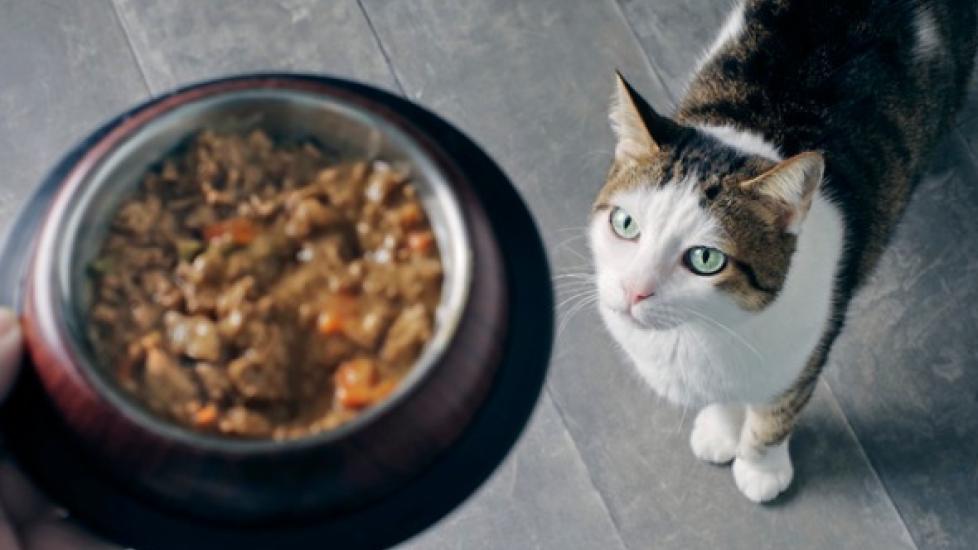What Is Organic Cat Food?
Selecting the best diet for your cat can be very challenging, and you want to make the best decision on behalf of your cat. Cat food that’s labeled as “organic” or “natural” sounds like the best choice, but is it truly a better option? What does it even mean for a cat food to be called organic?
This article will tell you everything you need to know about organic cat food and whether it’s truly a healthier food option for your cat.
What Makes A Cat Food Organic?
The term “organic” is widely used when it comes to pet food. As officially defined by Association Of American Feed Control Officers (AAFCO), organic animal feed must meet the production and handling requirements of the USDA National Organic Program (NOP).
The NOP is a federal regulatory program that develops and enforces uniform national standards for organically produced agricultural products sold in the United States. The NOP will certify that farms and businesses meet the national organic standards, while the USDA enforces the standards by conducting audits, investigations, and other enforcement activities.
According to the NOP website, “organic” products are “produced through methods that integrate cultural, biological, and mechanical practices that foster cycling of resources, promote ecological balance, and conserve biodiversity.”
The USDA’s National List of Allowed and Prohibited Substances identifies the synthetic substances that may be used and non-synthetic (natural) substances that may not be used in organic crop and livestock production.
Since organic regulations for pet foods are currently being developed, the NOP states that pet foods claiming to be organic must meet human food regulations.
Do All Organic Cat Foods Have the USDA Organic Seal?
No. Not all cat foods have the USDA Organic Seal. The use of certified organic ingredients does not mean that the product in its entirety is certified organic.
Which Cat Foods Can Have the USDA Organic Seal?
Only pet food products that contain at least 95% of organic ingredients can display the USDA organic seal and the certified organic statement.
What Does “Made With Organic Ingredients” Mean?
Cat foods that do not meet the 95% standard can still list “made with organic ingredients” on the label if they contain 70% organic ingredients in the overall product. Or they can use the term “organic” as a qualifier for certain ingredients in their ingredients list if they do not meet this threshold.
What’s the Difference Between Organic and Natural Cat Foods?
Organic cat foods must follow the same rules established by the USDA for organic human food manufacturers:
-
The crops are grown without the usage of fertilizers or herbicides.
-
The animals raised for meat, milk, or eggs are fed organically grown feed.
-
Companies that are accredited by the USDA inspect the operations of the farmers and food companies.
Natural cat food is defined by AAFCO as:
“…a feed or feed ingredient derived solely from plant, animal, or mined sources in final form, but having been produced by or subject to chemically synthetic process and not containing additives or processing aids that are chemically synthetic except in amounts as might occur in good manufacturing practices.”
For a cat food to be labeled as “natural,” ALL of the ingredients must meet the AAFCO definition. If there are any artificial preservatives, flavors, or colors, then the term “natural” cannot be used.
Exceptions are chemically synthesized vitamins, minerals, or trace nutrients that may be needed to make sure that the diet is complete and balanced. There must be clarification that the food is “natural with added vitamins and minerals.”
Is Organic Cat Food Better?
According to Tufts Veterinary Nutritionist, Cailin Heinze, “the bottom line is that there is little evidence of nutritional benefits of organic foods for humans. This likely applies even more for pets, as pet food is designed to be ‘complete and balanced,’ providing essential nutrients at levels that meet or exceed recommended amounts.”
It’s recommended to look for the “basic four” on a cat food label:
-
Protein (animal sourced)
-
Fat (such as fish oil)
-
Fiber (such as gums, beet pulp)
-
Water
Several states have regulations requiring the minimum amounts of nutrients that a cat food must contain, along with the maximum amount of moisture and crude fiber.
To find the best food for your cat, talk with your veterinarian and do your research. Research the pet food company. Make sure that the company making the food has a board-certified veterinary nutritionist on staff. You do not want to compromise things like nutritional knowledge and the quality control just so you can feed organic.
Featured image: iStock.com/Lightspruch
Sources:
fda.gov/animal-veterinary/animal-health-literacy/pet-food-labels-general
